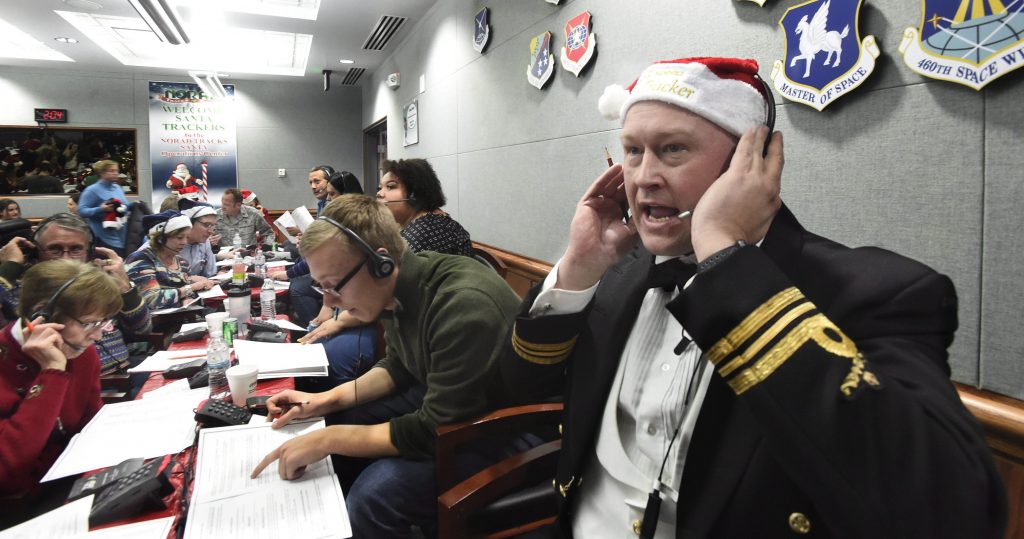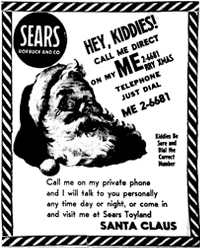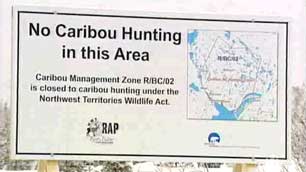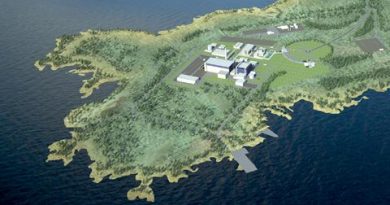64 years tracking Santa with the North American Aerospace Defense Command

Did you know that you can follow Santa Claus on his long journey around the world?
For the 64th time, the North American Aerospace Defense Command (NORAD) deploys its radars to track the flying sleigh. The joint Canadian-American venture uses infrared sensors to detect heat signatures from Rudolph’s nose.
“In addition to our day-to-day mission of defending North America, we are proud to carry on the tradition of tracking Santa as he travels along his yuletide flight path,” said Gen. Terrence O’Shaughnessy, commander of NORAD and U.S. Northern Command in a press release.
NORAD is a bi-national U.S. and Canadian command charged with aerospace and maritime warning and aerospace control of North America as well as monitoring aerospace activity globally.
Track Santa around the globe
According to the Canadian government, Santa Claus lives in Canada.
He was officially declared a full citizen in 2008 by Canada’s Immigration Minister and was issued a Canadian passport in 2013.
That is why the Canadian Minister of Transport, Marc Garneau, is the one who authorized Mr. Claus and his nine reindeer to take off this morning.
Santa is cleared for takeoff! I wish you all a safe and happy holiday season! 🎄❄️ pic.twitter.com/DBEb1UlVi6
— Marc Garneau (@MarcGarneau) December 23, 2019
According to NORAD’s tracking data, which is being updated in real time, Mr. Claus is delivering about one million gifts every 12 seconds. It means that he has already given out two billion presents in the first eight hours of his journey.
The organization’s Twitter account claims that “Santa is flying fast.” In fact, he is even faster than the speed of sound (approximately 343 m/s)!
His first stops this year were in eastern Russia and Asia, just in time for Christmas Day there.
The public can track Santa’s journey by accessing NORAD’s official Santa Tracker, and can also call 1-877-HI-NORAD (1-877-446-6723) to speak live with professional and volunteer NORAD trackers.
How did NORAD end up tracking Santa?
It all began in 1955 with a small mistake in a local newspaper advertisement.

On Christmas Eve, a local Sears store in Colorado Springs ran a Christmas ad informing children that they could call Santa directly. Except that the contact number in the ad was misprinted.
Sears and Roebuck Ad that led to NORAD Tracking Santa. (NORAD Public Affairs)
In fact, the number lead to the operations centre of the Continental Air Defense Command, the predecessor to NORAD.
Instead of getting through to Mr. Claus, it was the on-duty crew commander, Colonel Harry Shoup of the U.S. Air Force, who answered the phone.
Realizing it was a mistake, Colonel Shoup still assured the child that he was Santa Claus.
He then assigned a duty officer to continue answering calls.
“Thus, a tradition was born, and continued when NORAD was formed in 1958,” says the agency in a press release. “Each year since, NORAD has reported Santa’s location on Dec. 24 to millions of children and families.”
Different Santas?
NORAD is not the only one tracking Saint Nick’s sled. Google is also following his journey through the world.
However, there seems to be a glitch as Mr. Claus’ location differs in the two trackers…
It's the most magical time of the year, and we were honoured to have a moment with Santa Claus and to hear what Santa had in his mind before beginning his journey!
We wish you all a very Merry Christmas!@OurFinland @OnlyInLapland#christmas #santaclaus #rovaniemi #lapland pic.twitter.com/50FMHx2xe0
— Visit Rovaniemi (@VisitRovaniemi) December 24, 2019
Also, Canada is not the only country that claims to be Santa’s country of residence. Rovaniemi, in Finnish Lapland, is known around the world for hosting his office.
In any case, what is certain is that Santa Claus is well monitored and supported to succeed in his mission.
Related stories from around the North:
Canada: Santa Claus cleared for flight in Canadian airspace, Radio Canada International
Finland: A gigantic Christmas theme park project in Arctic Finland, The Independent Barents Observer
Iceland: Arctic tourism in the age of Instagram, Eye on the Arctic special report
United States: When the ice melts, what will happen to Arctic tourism?, Cryopolitics Blog



